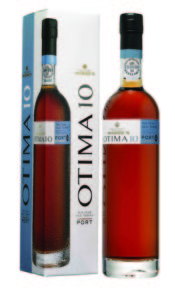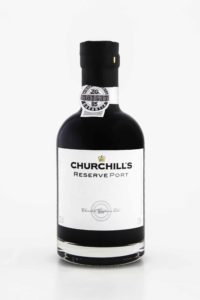Princely Port
If whisk(e)ys can be sold for top-notch prices, why not Port – the official toast of the British Royal family for over 200 years?
As of 2010, Port afficionados can purchase their Port anywhere between entry level and premium with the new super premium Ports selling for thousands of €uro depending on the age of the Port – some such as Ne Oublie contain Ports dating back to 1882 – and the quality of the packaging (crystal, sterling silver engraving etc).
The fact that these top-end Ports have seen a successful uptake has given the Port producers confidence to compete alongside the best in the wines and spirits marketplace.
But for the rest of us whose bank accounts are not in the stratosphere, the fortified wine known as Port is available at a variety of price-points and in many different styles and classifications, which include:
Vintage Port – constituting only around 2% of production, this refers to the Port being produced from the best grapes in a single vintage. Vintage years don’t come along every year and before the winemakers decide to declare a vintage year, potential vintage Port must be aged for two years in barrel in the cellars.
Late Bottled Vintage Port is aged for at least four to six years in barrel and generally not taken from vintage years. Unlike Vintage Port, it’s usually ready to drink when released.
Tawney Port is more brown than traditional Port from long maturation in barrel, spending a minimum of six to eight years there.
Colheita Port is a Tawney Port that’s been aged for a minimum of seven years before bottling.
Warre’s Otima 10 Year-Old Tawny Port
An aged 10 year-old Tawny with a light delicate palate, it challenges the perception of Port as a dark and full-bodied after-dinner drink. Warre’s Otima has ground-breaking contemporary design with broad consumer appeal whose radically different packaging was produced to appeal to younger drinkers.
With an excellent nose of nuts and hints of mature fruit, on the palate it’s light and delicate, beautifully rounded with hints of dried fruits and a long elegant finish.
The grapes used are a blend of traditional Portuguese varieties from the Douro Valley: Touriga Nacional, Touriga Franca, Tinta Barroca, Tinta Roriz and Tinto Cão.
Warre’s Otima 10 Year-Old undergoes fermentation with natural yeast at between 24 to 28ºC. Once the must has fermented to the desired degree of sweetness (usually within 48 hours) fortification takes place with grape brandy.
Alcohol: 20% vol (20ºC)
Food-pairing suggestion and serving: ideal with cheese, nuts or dried fruit, or on its own.
Available from Febvre & Co.
Churchill’s Reserve
Founded in 1981 by John Graham, Churchill’s was the first British Port wine company to have been established in over 50 years.
The grapes for the Reserve Port come from top grade A vineyards located in the Cima Corgo sub-region of the Douro.
Like all other Churchill’s Ports, the component wines of this Reserve blend have been vinified in traditional granite ‘lagares’ or treading tanks where the carefully-selected and hand-picked grapes are gently macerated and fermented to extract the very best of their potential whilst still retaining a little of their residual sugar.
The wines are matured in seasoned oak vats for a period of three years before bottling.
The end-result is a bright, full ruby-coloured Port with violet tones, very distinctive on the nose with fresh blueberries and hints of eucalyptus and gum cistu.
Available from Gilbeys.










